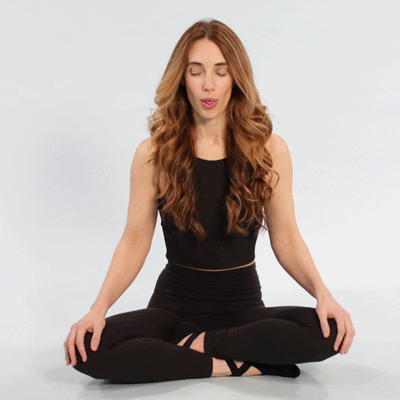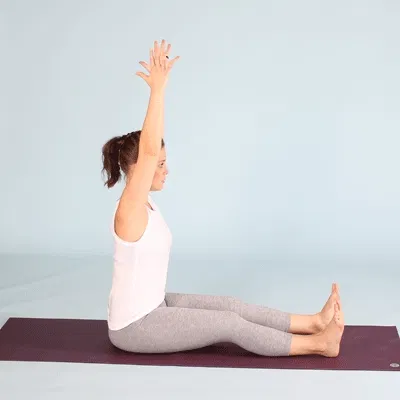Explore simple mindfulness exercises for women designed to reduce stress, calm the mind, and restore balance in daily life.
Introduction
Women today are under increasing pressure—balancing careers, family responsibilities, and personal well-being all at once.
Stress often builds up silently, manifesting as fatigue, irritability, or even physical health problems. Fortunately, mindfulness offers practical, science-backed exercises that women can integrate into their everyday routines to restore calm and reduce stress.
Mindfulness is not about emptying the mind or retreating into silence; it’s about being fully present in the moment.
For women, this can mean finding peace during a busy workday, calming the body before bed, or grounding themselves during emotional overwhelm.
Below are simple yet powerful mindfulness exercises for women, each designed to help reduce stress and support long-term well-being.
Do this Simple Mindfulness Exercises to Reduce Stress
1. Breathing Awareness
Breath is the bridge between the body and the mind. By paying attention to breathing, women can calm stress responses within minutes.
How to Practice:
-
Sit comfortably with your back straight.
-
Inhale slowly through your nose for four counts.
-
Hold the breath for two counts.
-
Exhale gently through your mouth for six counts.
-
Repeat this cycle for 5–10 minutes.
Benefits: Breathing awareness lowers cortisol (the stress hormone), reduces muscle tension, and improves focus. It can be practiced anywhere—during a stressful meeting, while waiting in traffic, or at night before sleep.
2. Body Scan Meditation
Stress often hides in the body as tension. A body scan helps women recognize and release this tension, creating a sense of deep relaxation.
How to Practice:
-
Lie down in a quiet space or sit comfortably.
-
Close your eyes and bring attention to your toes.
-
Slowly move your awareness upward—feet, legs, hips, abdomen, chest, arms, shoulders, face, and head.
-
At each point, notice sensations and release tightness by exhaling into the area.
Benefits: This technique helps reduce chronic stress symptoms like headaches, back pain, and jaw clenching. It’s especially useful for women experiencing stress-related insomnia.
3. Mindful Walking
Walking becomes transformative when paired with mindfulness. For women with busy schedules, mindful walking doubles as exercise and stress relief.
How to Practice:
-
Choose a quiet place or even a hallway at home.
-
Walk slowly, focusing on the sensation of your feet touching the ground.
-
Coordinate your steps with your breathing—inhale for two steps, exhale for two steps.
-
If your mind wanders, gently guide attention back to your steps.
Benefits: Mindful walking improves circulation, refreshes the mind, and reduces rumination. It’s ideal for women who spend long hours at a desk or multitasking at home.
4. Gratitude Journaling
Mindfulness is also about shifting focus from problems to positive experiences. Gratitude journaling is a practical way to reframe stressful situations.
How to Practice:
-
Keep a notebook by your bed.
-
Each evening, write down three things you are grateful for that day.
-
They can be simple: a good meal, a supportive friend, or a moment of laughter.
Benefits: Gratitude journaling rewires the brain to notice positives, reducing the impact of stress. Women who practice regularly often report improved mood and better sleep.
5. Five Senses Grounding
Stress pulls women into worries about the future or regrets about the past. The five senses exercise grounds attention firmly in the present.
How to Practice:
-
Look around and name five things you can see.
-
Notice four things you can touch.
-
Listen for three things you can hear.
-
Identify two things you can smell.
-
Focus on one thing you can taste (even just the taste in your mouth).
Benefits: This exercise is quick and effective for moments of anxiety, overthinking, or panic. It’s often used as an emergency tool for women experiencing overwhelming stress at work or home.
6. Loving-Kindness Meditation
Stress can strain relationships and self-image. Loving-kindness meditation helps women cultivate compassion for themselves and others, reducing tension.
How to Practice:
-
Sit comfortably and close your eyes.
-
Silently repeat phrases like:
-
“May I be safe. May I be healthy. May I live with ease.”
-
-
Gradually extend the wish to loved ones, friends, colleagues, and even difficult people.
Benefits: This practice softens negative emotions, decreases stress, and builds emotional resilience. It’s especially beneficial for women balancing caregiving roles and personal needs.
7. Mindful Eating
Eating while distracted often increases stress and leads to overeating. Mindful eating turns meals into calming, nourishing rituals.
How to Practice:
-
Sit down with your meal, free from phones or screens.
-
Observe the colors, smells, and textures of your food.
-
Take slow bites, chewing thoroughly, and notice the flavors.
-
Pause between bites to savor the experience.
Benefits: Mindful eating promotes better digestion, prevents stress-related overeating, and builds a healthier relationship with food. Women managing busy households may find this practice particularly grounding.
8. Three-Minute Mindfulness Break
Not every woman has time for long sessions. A quick, structured mindfulness break can be a lifesaver.
How to Practice:
-
Minute 1: Notice your current thoughts, feelings, and bodily sensations.
-
Minute 2: Focus entirely on your breathing, in and out.
-
Minute 3: Expand your awareness to your body and surroundings.
Benefits: This short practice can be done anywhere—in the office, in the car, or even in the bathroom during a hectic day. It provides immediate stress relief without disrupting schedules.
9. Visualization Meditation
Visualization uses imagination to create calming mental images that reduce stress.
How to Practice:
-
Close your eyes and imagine a peaceful setting—a beach, forest, or mountain view.
-
Engage all senses: hear the waves, feel the breeze, smell the trees.
-
Stay in this mental space for 5–10 minutes, returning whenever your mind wanders.
Benefits: Visualization lowers blood pressure and provides a quick escape from daily pressures. It’s particularly helpful for women coping with emotional stress.
10. Mindful Stretching
Gentle movement combined with mindful awareness reduces stress and tension stored in the body.
How to Practice:
-
Choose simple stretches: reaching arms overhead, neck rolls, or gentle forward bends.
-
Focus on the sensation of each movement and the rhythm of your breath.
-
Avoid rushing—move slowly and intentionally.
Benefits: Mindful stretching improves flexibility, reduces muscle stiffness, and relieves the physical strain caused by stress. Women working long hours at desks benefit most from this practice.
Frequently Asked Questions (FAQ)
1. How much time should women spend on mindfulness each day?
Even 5–10 minutes daily can significantly reduce stress. Longer sessions (20–30 minutes) may provide deeper benefits, but consistency matters more than duration.
2. Can mindfulness exercises replace therapy or medication for stress?
Mindfulness is a powerful complementary practice but not a replacement for professional care. Women with chronic stress, anxiety, or depression should combine mindfulness with medical or therapeutic guidance.
3. What is the best mindfulness exercise for beginners?
Breathing awareness is the easiest starting point. It requires no special space or tools and can be practiced anywhere, making it beginner-friendly.
4. Is mindfulness safe during pregnancy?
Yes, mindfulness is safe during pregnancy and may even ease anxiety, improve sleep, and support emotional well-being. However, women should avoid physically strenuous practices unless approved by a doctor.
5. How long does it take to notice results from mindfulness?
Many women feel calmer after a single session, but lasting benefits—like reduced stress, improved focus, and better emotional regulation—are usually noticeable within 4–6 weeks of consistent practice.
6. Can mindfulness help with hormonal stress (PMS, menopause, etc.)?
Yes, studies suggest mindfulness reduces mood swings, irritability, and sleep issues linked to hormonal fluctuations. It helps women regulate emotions during PMS, perimenopause, and menopause.
Conclusion
Stress in women is unavoidable, but it doesn’t have to control daily life. By practicing simple mindfulness exercises—whether through breathing awareness, mindful walking, or loving-kindness meditation—women can build resilience, restore calm, and improve emotional balance.
The beauty of mindfulness lies in its flexibility; it can be practiced in short breaks, during meals, or before bed. With consistency, these exercises transform not just moments of stress but overall quality of life.
Additional Resources and References
Find this book and read it: Kabat-Zinn J. Full Catastrophe Living: Using the Wisdom of Your Body and Mind to Face Stress, Pain, and Illness.







Pingback: Managing PCOS Symptoms with Diet and Exercise - SheCure
Pingback: Natural Skincare Routines for Women with Sensitive Skin
Pingback: Daily Routines to Improve Women’s Energy and Health